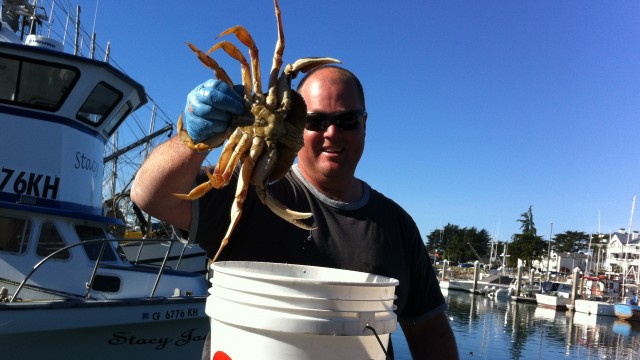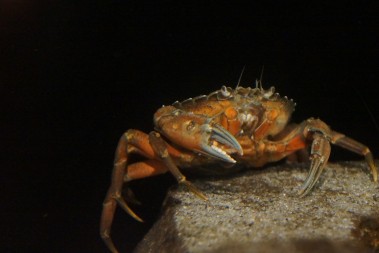
The San Francisco Bay plays an important role in the lifecycle of the delicious Dungeness crabs that abound this time of year! Found from Baja north to Alaska, they’ve been commercially harvested since the mid-1800s around the bay. When we buy crabs from the boats at Pillar Point near Half Moon Bay, I think about the journey these crabs have made up to this point. Many have likely spent the early portion of their lives in our bay.
In the spring, offshore in the Pacific Ocean, females shed their old shells with a new, soft shell already formed under the old one. This is the only time crabs can grow. The males can only mate with females who are in the “soft shell” state. After mating, the female carries her egg mass of around 1.5 million eggs pressed against her abdomen under her tail flap until the young hatch in December or January.
Once hatched, the microscopic larvae are on their own, taken where the currents carry them. The young go through a series of seven changes that includes molting and growing. Many are eaten in these early stages, siphoned in by any plankton-eating animals in the ocean. Crab larvae can reportedly travel, unharmed, in the bells and tentacles of jellyfish –- something Pixar could use in their next animated ocean movie. Young crabs that survive settle to the bottom of the ocean. Some then migrate through the Golden Gate to spend the next year in the protected habitats of the bay. Studies have shown that crabs that grow in the bay are larger than same-aged crabs in the Pacific due to the bay's warmer water and abundance of food. They're found mostly in the Central Bay and San Pablo Bay.

After about a year, spent scurrying around oyster beds, eel grass, mud flats and the rare sandy beach, the young crabs are ready to migrate back out to the cold, deep waters outside the Golden Gate. The importance of their time in the bay influences the success of their local population. They’ve had years when the population dropped too low to allow many to be caught. In the 1970s, studies by the Department of Fish and Game were done to determine what caused their extreme low numbers, which began in the ‘60s. Pollution was thought to be a problem. Today non-native predators like the invasive Atlantic Green Shore Crab, unintentionally introduced to the bay in 1989, may be contributing to lower numbers of the native crustaceans. Atlantic Greens can predate on Dungeness that are the same size as themselves or smaller. Keeping the bay clean and controlling unintended introductions of species are both important steps to ensuring we have a healthy crab fishery.
Stop by the Crab Cove Visitor Center to see local intertidal and bay life on display. You can watch our aquarium feeding program every weekend from 3-3:30pm and enjoy the great diversity of life found in our bay.